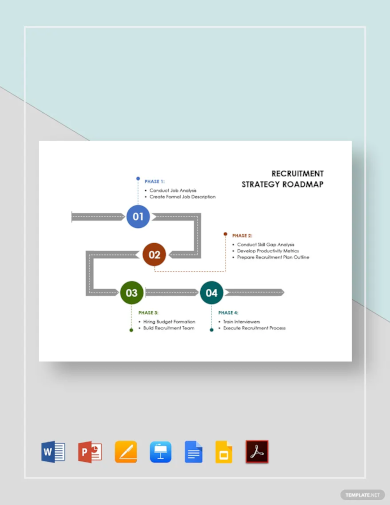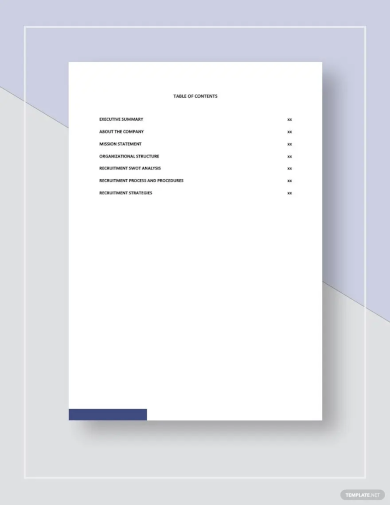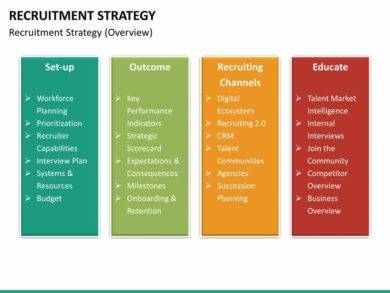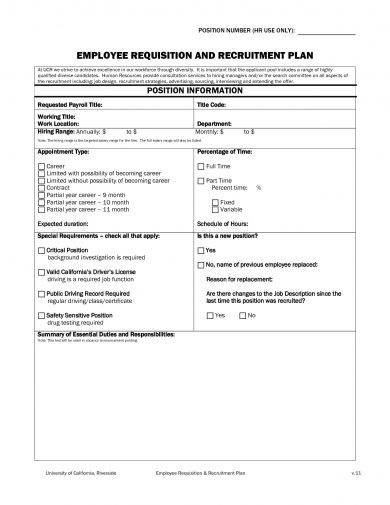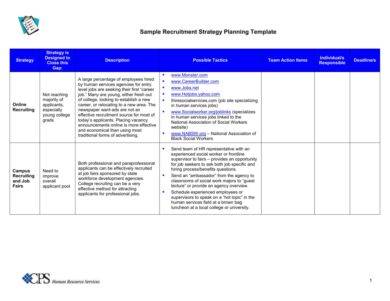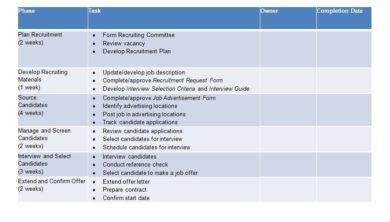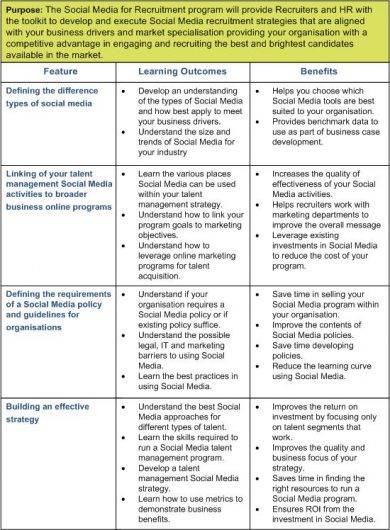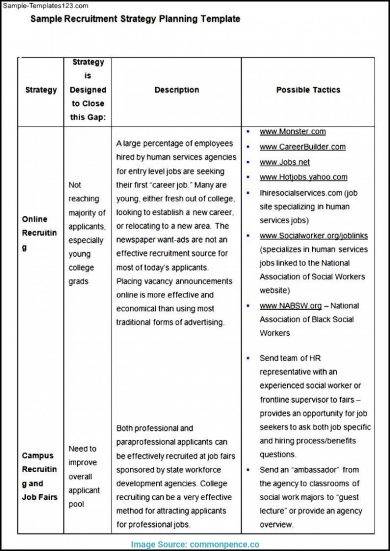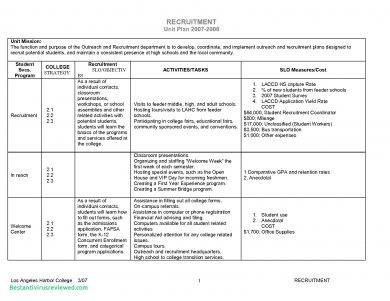Recruitment Strategy Plan Examples to Download
The recruitment process is basically the process of hiring an employee. There are companies who take months just to hire one person while there are other companies who accomplish the hiring process in less than a week. There are numerous factors on why this occurs, but it all results in individuals getting hired (or not if the company decides to temporarily hold the job posting).
If you are working for human resource or tasked by the company to create a recruitment strategy plan, listed below are some recruitment plan examples you can use when you will be creating your own recruitment strategy plan.
Recruitment Plan Gantt Chart Template
Recruitment Strategy Roadmap Template
Recruitment Plan Template
Recruitment Strategy Plan Outline Example
Employee Requisition and Recruitment Plan Example
Sample Recruitment Strategy Example
The Recruitment Process
The recruitment process varies for each company. But the most basic and most used recruitment process includes the steps listed below. There are companies who combine some of the steps and jam them into a single day or single week to make the recruitment process faster. This is true for companies who urgently need new hires to replace retired employees or new hires to pioneer a company’s new office or branch. You may also see action plan examples.
1. Job posting
The first ever step in every recruitment process is posting the job vacancies. Practically all companies are now posting their vacancies online, although there are some who still post in newspapers and distribute flyers to random passerby in the streets. A job posting signifies that there is a vacancy in the company, either a full-time job or a part-time one. You may also like quality plan examples & samples.
Companies also indicate how many vacancies are available while also listing down the job description and specifications in the same posting.
If a job posting is posted online, the applicant’s resume is sent directly to the company’s recruitment database. This becomes easier for the human resource department as they don’t need to compile huge piles of CV hard copies, which often result in a number of CVs getting lost including the ones that are being shortlisted for an interview or exam.
2. Shortlist
Speaking of shortlist, the next step in the recruitment process after posting the job vacancy is shortlisting the applicants. This will be the first of four shortlists, as recruitment process will still undergo numerous steps to identify the most qualified person for the job. You may also check out company plan examples & samples.
This first shortlist will be the most difficult, as applications will include the ones who do not even meet the job qualifications. Depending on the vacancy, the job posting will result with a large number of applications. This is true for large and popular companies (i.e., banks, malls or department stores, manufacturing companies, automotive companies, hotels, restaurants, outsourcing companies, etc.) who have multiple job openings. You might be interested in advertising plan examples & samples.
3. Interview
After the first shortlist or screening, the remaining applicants will undergo a job interview. The applicants are usually grouped together depending on the availability of the human resource manager or personnel. Due to some companies wanting to make the recruitment process as quick as possible, they schedule all the interviews in a single day. You may also see sales plan examples.
Although this is not advisable as there might be some qualified applicants who might not make it on the scheduled interview day.
4. Shortlist (again)
The second shortlist will involve removal of applicants who did not pass the interview stage of the recruitment process. This will be easier compared to the first shortlist as there will be less applicants to review (in which most of them are already qualified for the job). You may also like event plan examples & samples.
5. Exam
Some companies usually hold the exam together with the interviews to speed up the recruitment process. Usually, exams take longer than the interview so if there are multiple applicants or multiple job openings, it is advised to have the exams and interviews on separate dates. Again, compared to interviews, exams take a longer time to check especially if the exam involves essay and computation-type questions. You may also check out daily plan examples & samples.
6. Shortlist (for the third time)
The third shortlist will involve weeding out the employees who did not pass the exam. There are some companies who consider applicants who did not get a passing score but passed in the interview.
7. Final interview
Most companies use the final interview to assess if the applicant’s willing to work for the company long-term. The applicant is usually hired before he begins his final interview, but he is not informed of it. The final interview usually involves the manager or any officer in the company conducting the interview, and acts as a feeling out process for both the applicant and the manager or officer. Some companies also use the final interview for the applicant to sign the standard contract.
8. SMS or email communication
Companies through their human resource department contact the successful applicant. They either contact through texting, calling, or sending the applicant a formal email that he got the job.
Recruitment Strategy Plan Graph Example
Tutor Recruitment Plan Example
Basic Recruitment Strategy Plan Example
How to Create a Recruitment Strategy Plan
There are numerous factors on how a company, specifically the human resource department, creates a recruitment strategy plan. The factors include the number of employees the company wants to hire, the existing HR employees the company has, and the budget the company has allotted to HR, to name a few. You may also see annual plan examples and samples.
Despite the numerous factors, the recruitment strategy plan usually revolves around how to the company will make their recruitment process easier. It can either be purchasing human resource software, increasing the number of HR personnel, or outsourcing the entire recruitment process. You may also like project plan examples.
HR departments sometimes take flack for being a department that does not do anything aside from hiring employees. That is not entirely true as they collaborate with top management on creating company policies, while also acting as counselors for employees experiencing workplace issues. You may also check out management plan examples.
How Technology Affects Recruitment in the Future
In this digital age, technology has already affected every aspect of business functions, including human resource. There are already numerous HR software that can be purchased or even downloaded for free. Ten years ago, HR software didn’t even exist and companies had to rely solely on applicants submitting CVs in their offices, with the resumes becoming unnecessary paperwork and eventually clutter. You might be interested in audit plan examples & samples.
Technology will continue to become a driving force in how companies conduct their recruitment process. When HR departments started to use video call software like Skype to conduct interviews, it was already a revolutionary step in human resource.
Future human resource systems might even identify qualified applicants without even letting the individuals submit a single resume. Additionally, a much faster and more efficient system to shortlist applicants will also definitely be developed. You may also see work plan examples & samples.
Social Media Recruitment Strategy Plan Example
New Recruitment Strategy Plan Example
Guide for Recruitment Strategy Plan Example
Annual Recruitment Unit Plan Example
Make sure to hire the right employees with the recruitment strategy plan examples we provided. We also added some tips on how to create a recruitment strategy plan for your company.




